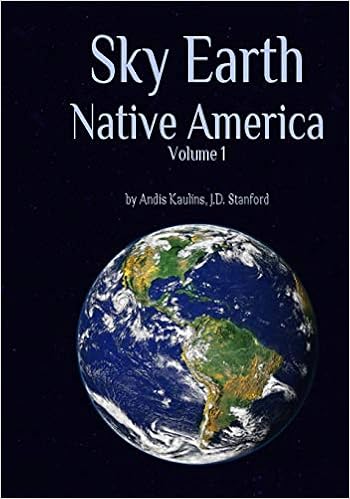In the era of the construction of Avebury, the solstitial colure (line) of the Winter Solstice in the stars ran through Cygnus, going through approx. Alpha Cygni in ca. 3100 B.C. and approx. through Gamma Cygni in ca. 2500 B.C.
We add that solstitial colure below for 2500 B.C. as the thick red line to the underlying sky map from the astronomy software Starry Night Pro 3.1, http://astronomy.starrynight.com. However, we remain of the provisional opinion that Avebury Stone #46 may in fact date back to ca. 3100 B.C. and thus may predate the full construction of the Avebury Henge complex, in which case the solstitial colure would have been "higher" toward Pegasus than here below.
In terms of the ancient "measurement" of the heavens via a starry night sky carved in the stones, the central Cygnus star Gamma Cygni in ca. 2500 B.C. is a useful point because in that era it is nearly midway between the Winter Solstice point in the stars (on the ecliptic) and the North Celestial Pole
Gamma Cygni marks the "eye" of Cygnus on Avebury Henge Stone #46 as deciphered in the previous posting and also practically straddles the Galactic Equator. Note that the Cygnus side of Avebury Stone #46 is drawn exactly along that same Galactic Equator.
The large henge-outward and henge-inward "faces" of Avebury Stone #46 mark neighboring stars to the Cygnus side. These stars along solstitial colure pointed to the Winter Solstice and to winter weather. We see figures in our tracings of the most prominent lines on the henge-outward and henge-inward "faces" of the stone that could be interpreted to be people on sleds in the snow.
Ancient sleds were, depending on the culture, also called toboggan, pulk or ahkio. Especially the latter term ahkio is of possible interest because the stars marked here include the Great Square of Pegasus, known in ancient Sumerian (viz. Babylonian) MUL.APIN texts as ASH.IKU, whereby IKU is viewed as the term for "square" or "field".
A toboggan-like sled might be found on the henge-outward face below the prominent human head profile, i.e. the figure would be sitting in that sled. The henge-inward face might at the front include a solo sledder lying face forward on a sled of the type that we all used for sledding in our younger days.
The sledding explanation is, of course, not essential, and had nothing to do with our identification of the stars that correspond to the markings on the stone.
The henge-outward face of Avebury Stone #46 was in fact particularly difficult to decipher because of the lack of "prominent" easily-identifiable figures in this area of the sky, and, indeed, except for the Great Square, modern astronomy has no constellations at all in this sector of the heavens. Thankfully, we were ultimately able to overlay star fields on tracings of prominent markings on the stone to arrive at solutions.
We present the henge outward and henge inward faces of Avebury Stone #46 separately in the next postings.
"Where there is no vision, the people perish: but he that keepeth the law, happy is he."
-- Proverbs 29:18, King James Bible (KJV)
-- Proverbs 29:18, King James Bible (KJV)
°°°°°°°°°°°°°°°°°°°°°°°°°°°°°°°°°°°°°°°°°°
Native American Rock Art Petroglyphs Pictographs
Deciphered as Land Survey & Astronomy by Andis Kaulins
paperbacks in color print
Volume 1, 2nd Edition, 266 pages
ISBN: 1517396816 / 9781517396817
Volume 2, 2nd Edition, 262 pages
ISBN: 1517396832 / 9781517396831
Sky Earth Native America Volume 1-----------Sky Earth Native America Volume 2
by Andis Kaulins J.D. Stanford by Andis Kaulins J.D. Stanford
(front cover(s))
 ------
------
(back cover with a photograph of the author and book absract text)

